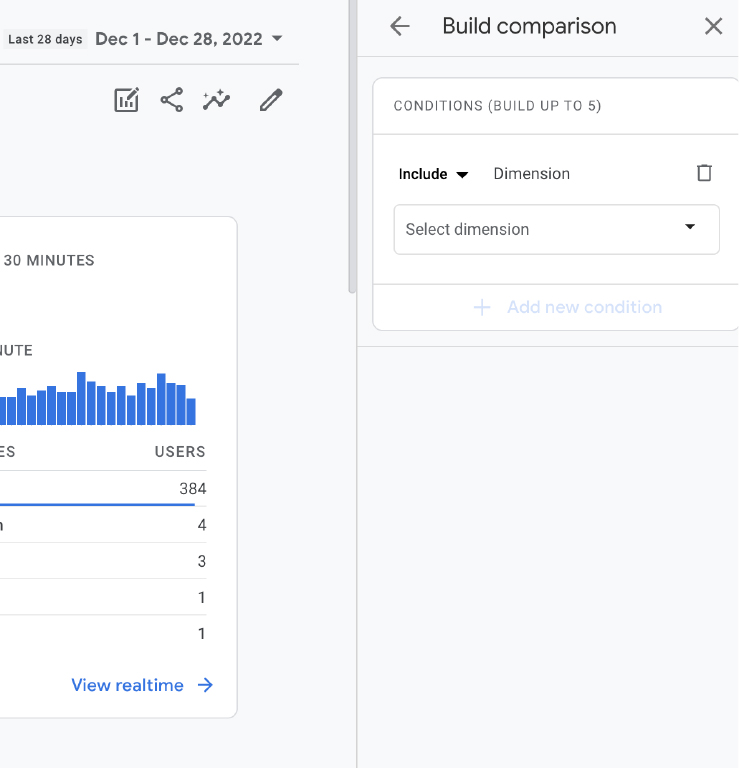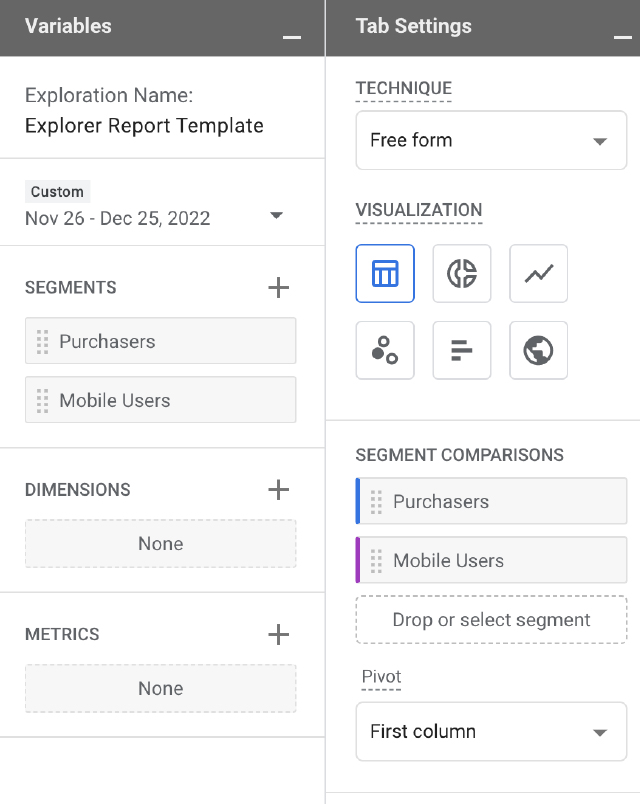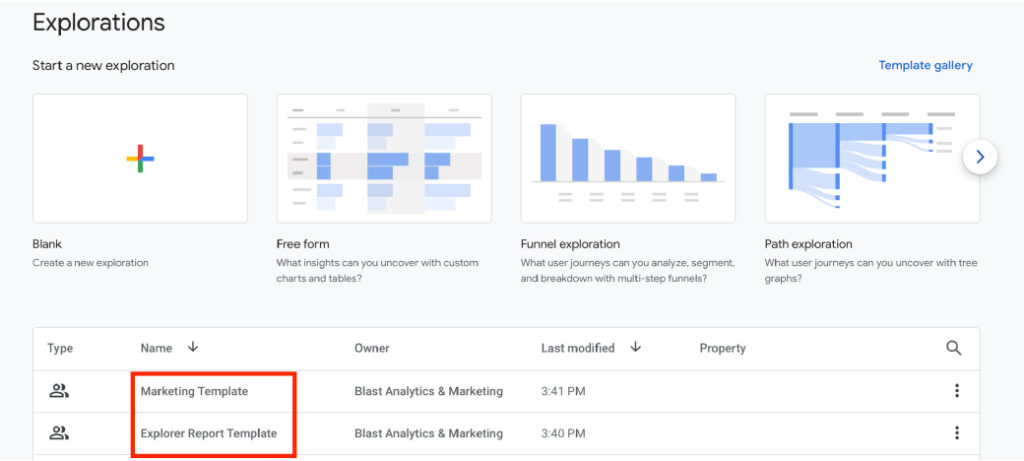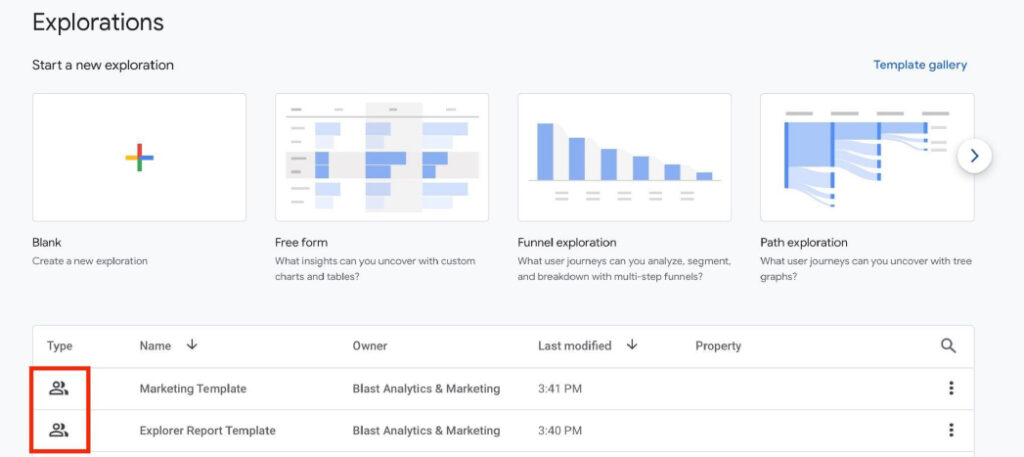Data Segmentation in Google Analytics
Segments help organizations dissect and analyze their data in meaningful ways that suit business needs. With the ability to include or exclude subsets of data, organizations can tailor their reports to see the most helpful information. This type of data is a cornerstone of any Digital Experience Optimization (DXO) endeavor and a core component of any MarTech stack.
GA4 comes with differences, and segment ability and usage have undergone big changes.
Many are accustomed to how segments work in Google Analytics Universal (GA Universal); however, Google Analytics 4 (GA4) comes with differences, and segment ability and usage have undergone big changes. Organizations must make the most of these differences to ensure their business needs remain addressed with the least amount of friction.
Segments and Their Limitations in GA4
Google Analytics Universal has two main reporting sections: out-of-the-box reports and custom reports and dashboards. Google Analytics 4 (GA4) also has two main reporting sections: standard reports and explorer reports. Standard reports are the out-of-the-box reports that Google creates for you, and explorer reports are custom reports organizations can create. While there are some customizations you can make to standard reports, these reports can be limiting depending on what information you want to see. While standard reports show top-level details about your data, explorer reports dig deeper and allow organizations to truly analyze their data.
Another way these two reporting sections differ is how segmentation functions. In Google Analytics Universal, organizations can save segments per view or for any view in a property and apply these segments to both the out-of-the-box reports and any custom reports. When combined with the ability to share segment settings with other users, this makes it easy for organizations to allow all users to use and apply the same segments built the same way. However, Google Analytics (GA4) segments are only usable in custom reports in the explorer section.

In Google Analytics (GA4), it isn’t possible to apply segments to standard reports. You can create comparison reports that allow you to compare subsets of data; however, these aren’t savable unless you alter the entire report to have those comparisons applied every time, which isn’t always ideal. Explorer reports let users apply and save segments; however, these are only savable to that particular explorer report and require recreation for each explorer report, which also isn’t ideal.

These limitations and changes to segments can cause many issues for organizations. Without the ability to save and share segments, users must recreate their own versions of the same segments. The biggest issue with this process is that there are no guarantees that users will create segments in the exact same way — potentially leading users to think they’re viewing the data under the same conditions when they may not be.
This issue can lead to further problems. Organizations might end up making decisions and taking actions based on misinformation about the data, or foster disagreements about the data, leading to data mistrust. To curb these issues, organizations need to find workarounds and solutions before costly mistakes become reality rather than a warning.
Take Segments in Explorer Reports Further
One quick way your organization can prevent mistakes and deal with the limitations of segments in GA4 is to create explorer report templates.
Start by talking to your various users and teams about what segments they use most, what reports are most critical to use with those segments, and what their general analysis and data segmentation needs are. These can include general segments, such as purchasers or mobile users, or they can be more complex segments with multiple conditions or sequences.
If your organization doesn’t have multiple teams, you can create one general template at the outset and build more specialized templates as the need arises.
Next, use those needs to create explorer report templates that the various teams can use for their reporting needs. Each template should have that team’s segments already created and saved to the report. Title each template based on the team or user that the template will live with. For example, “marketing template” or “ecommerce template,” etc. If your organization doesn’t have multiple teams, you can create one general template at the outset and build more specialized templates as the need arises.

Finally, within the user interface, share the templates with your organization. Shared explorer reports are read-only, but any user can duplicate the report. Once duplicated, users can update timeframes and add dimensions, metrics, and visualizations to suit their reporting needs. Educate your teams on using these templates as the starting point for all their explorer reports. While duplicating the report allows them to modify the segment, they shouldn’t have to do so, as the necessary modifications are built into the template for them already.

These templates provide governance and control over segment build methodology, with the goal of consistent cohesion no matter who is looking at the data while still providing mass access to the segments. Additionally, templates allow users to keep saved segments in easy reach without needing to recreate them every time.
Don’t Let Segment Limitations Limit Your Analysis
While Google has changed how organizations can use segments, organizations can find workarounds that limit the impact and frustrations these changes might otherwise cause. Although creating templates doesn’t solve all the risks and issues Google Analytics’ (GA4) segment usage creates, it’s a proactive step in addressing some of the biggest pain points and gives organizations peace of mind when it comes to their data exploration needs.
Need support to enhance Google Analytics (GA4) reporting and create more value and impact for your analytics efforts? Reach out to BlastX to discover how you can extract more value out of segments and use the insights to optimize the digital experience for your customers and create a sustained competitive advantage for your brand.

